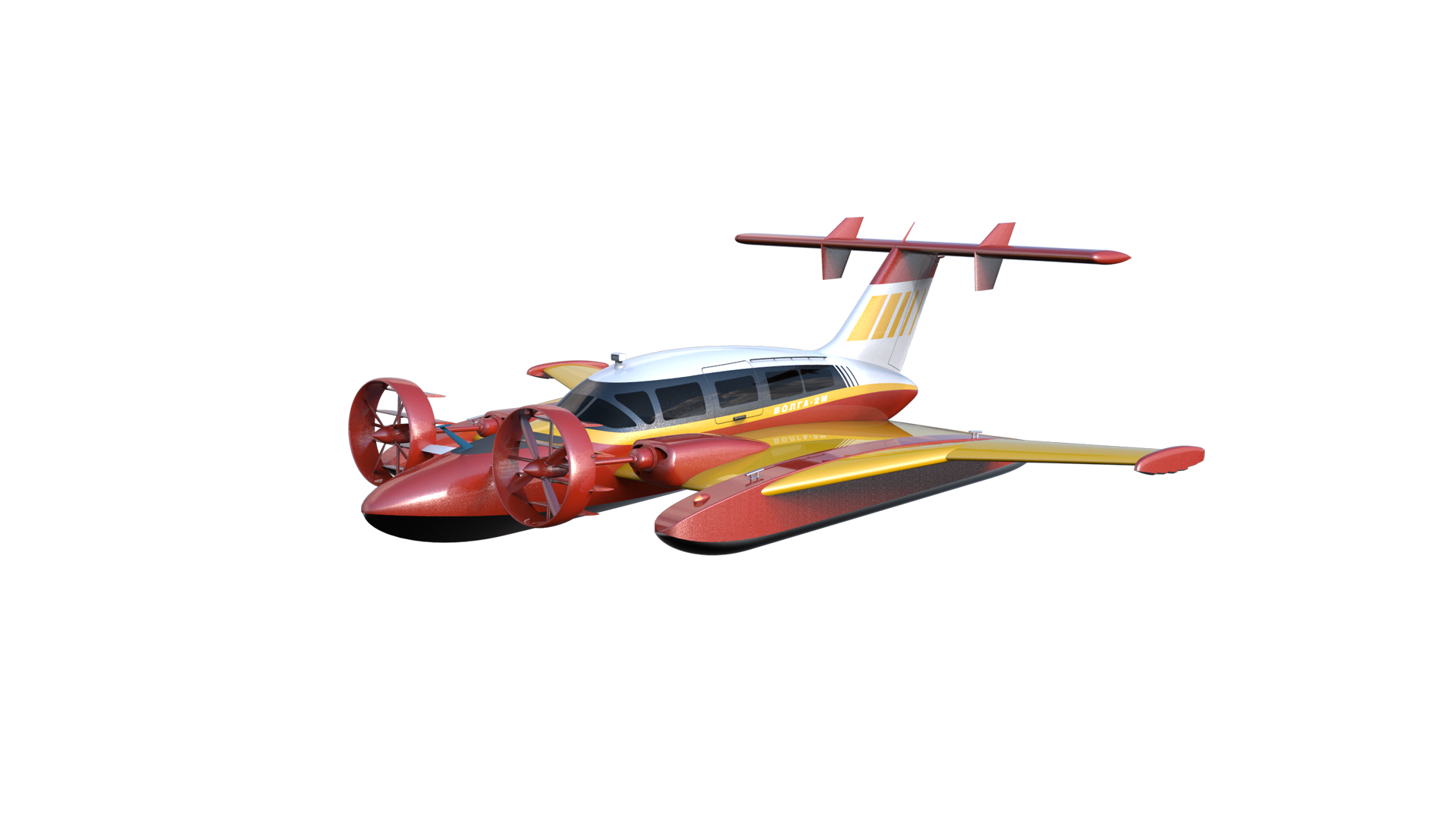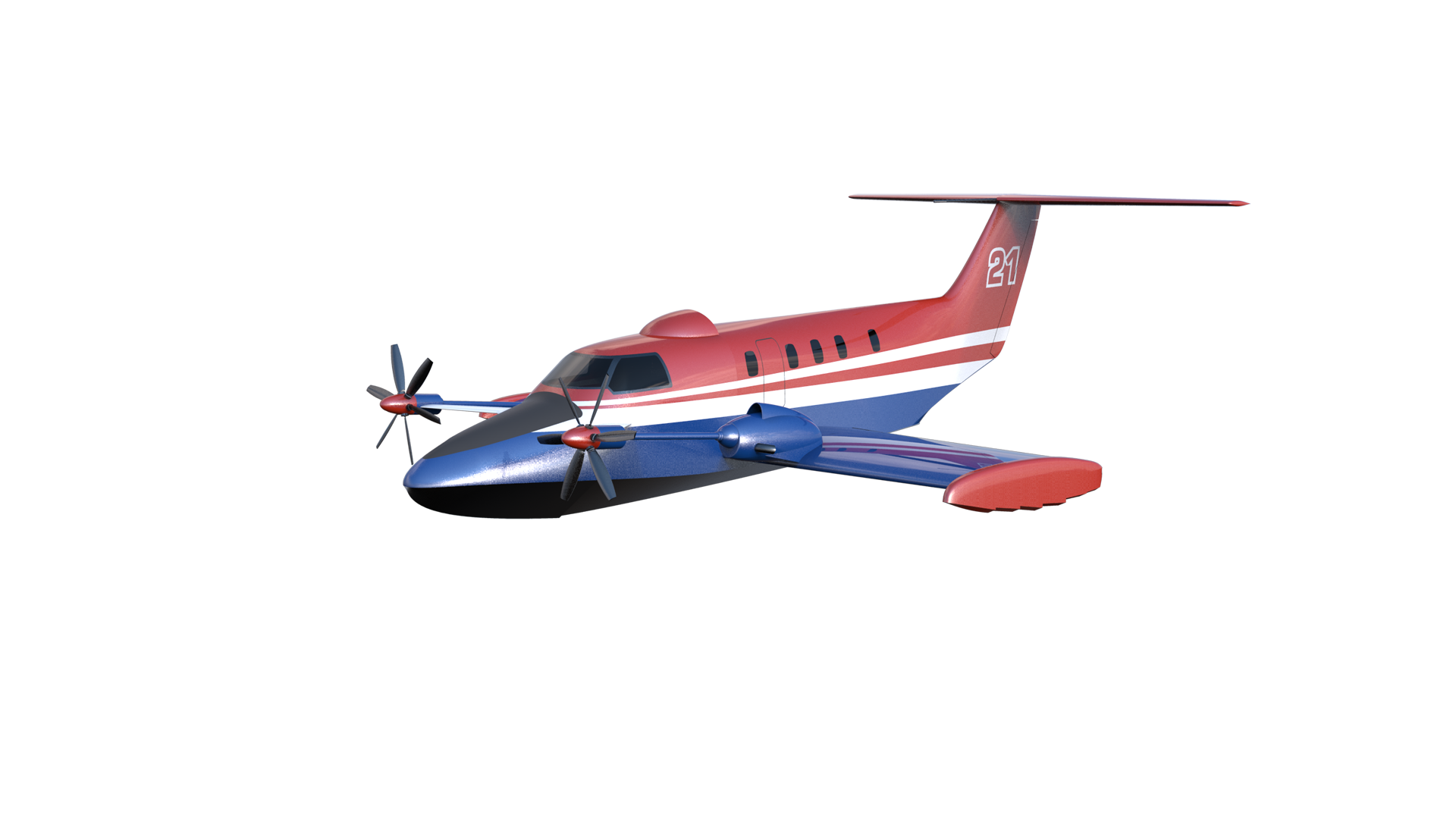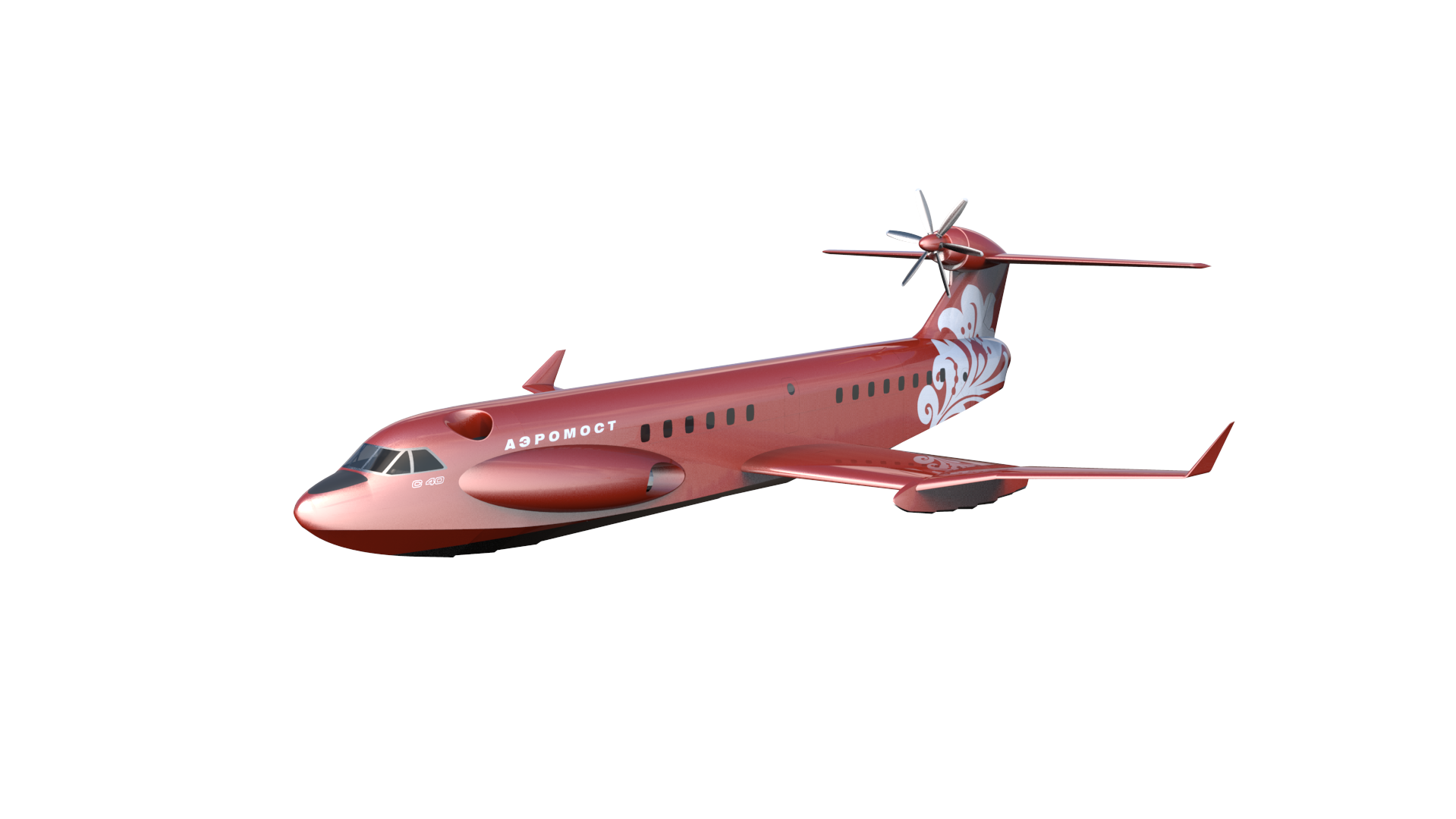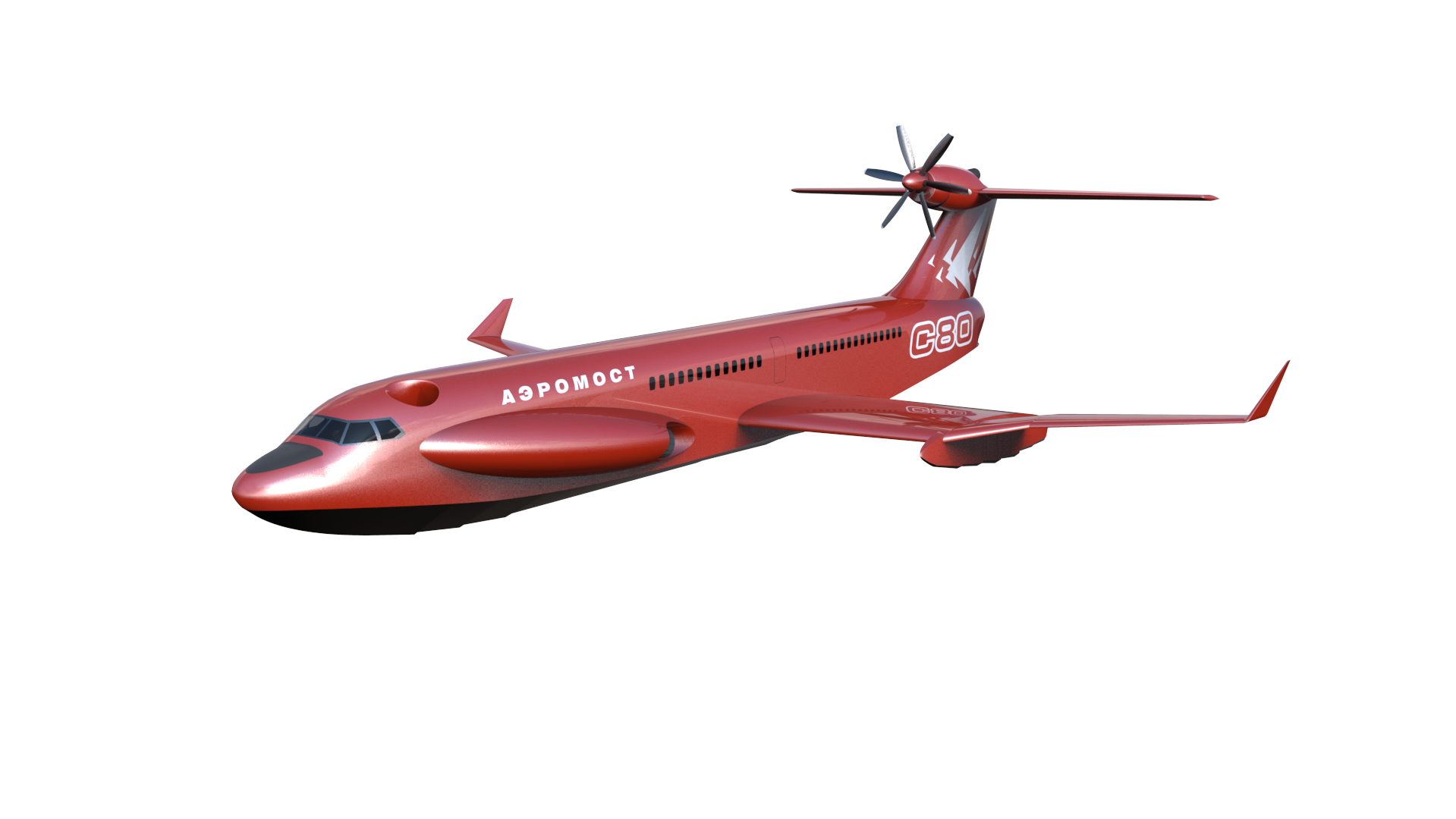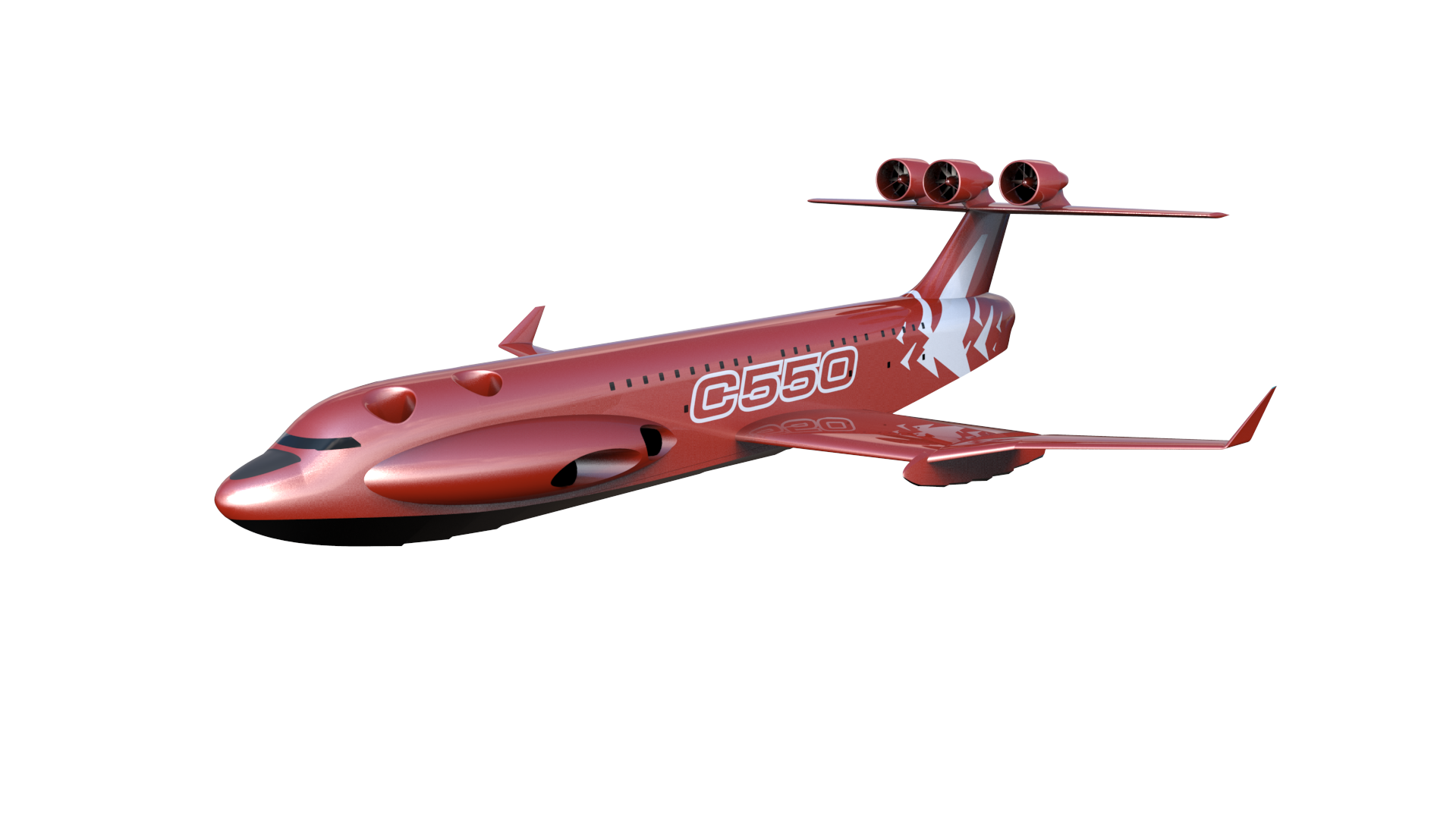Ekranoplans were created under the guidance of Alekseev. These are a new type of ultra -high -speed vehicles, an unparalleled sea aircraft with a new motion principle based on the use of aerodynamic effect of supporting surface proximity – a "surface effect" for ultra low cruising.
From physical point of view, The effect is demonstrated in a significant increase of airwing lift when reaching the surface of water (land, snow, ice), i.e. it is a mirror reflection of “the Alekseev effect”.
The changeover from foils to airwings has enabled to withdraw limitations imposed on ship speed and to bring it closer to the aircraft speed. Hydrofoil speed is limited by 120 km/h because of cavitation of foils and protruding parts . However, there are no limitations for ekranoplanes in the subsonic speed range. Thus, the adoption of ekranoplanes may lead to ten -fold speed increase for the water transport. WIGs are transportation means which combine the positive qualities of both ships and aircraft.
In 60 - s – 80 - s the Russian shipbuilders built the ekranoplanes with weight of 1 . 5 to 500 tons and speed of 200 to 525 km/h.
Ekranoplans are the XXI century transportation means with aviation - type speed, they do not need any aerodromes and can be operated above any relatively even surface.
Limitations by seakeeping for ekranoplanes exist at takeoff and water landing only.
Unlike the aircraft wing, the ekranoplanes wing has a special profile and form most suitable for effective use of free - stream flow that is pressurized between the wing and the surface (screen).
The Russia -made ekranoplanes possess motion stability by altitude, pitching and bank and also corresponding controllability characteristics.
A new system of alighting gears which provides a considerable decrease in intensity of main structures -to - water contacts is used in the Alekseev’s DB ekranoplanes. The decrease begins from lowermost speeds due to effective use of jet energy (supply of pressurized jets under wing) and of hydrodynamic element system including hydroski.
The availability of jet energy system provides tractive resistance decrease during takeoff run: in combination with the damped hydroski the motion stability characteristics are improved and the acting loads are decreased.
The jet energy system was initially suggested, developed and introduced in the Alekssev’s DB for home -made ekranoplanes as an effective means of take - off/ landing provision.
The following motion regimes are possible during ekranoplane operation: flight, takeoff and landing, navigation on calm water and at waves, coming ashore, launching, moving on shallow water etc.
So, many operational modes influence a wide range of aerodynamic and other loads acting on ekranoplane airframe and give rise to a wide spectrum of strength, vibration, hydro -aeroelasticity problems which are greatly influencing the safety of ekranoplane operation.
The above problems are successfully dealt with on ekranoplanes in operation that are developed in Russia.
Basing on experience and done research, the riverine and sea ekranoplanes with the following specifications can be developed, including passenger, cargo -and -passenger and special -purpose:
- passenger capacity up to 500 persons;
- cargo capacity up to 64 tons;
- speed up to 550 knots.

